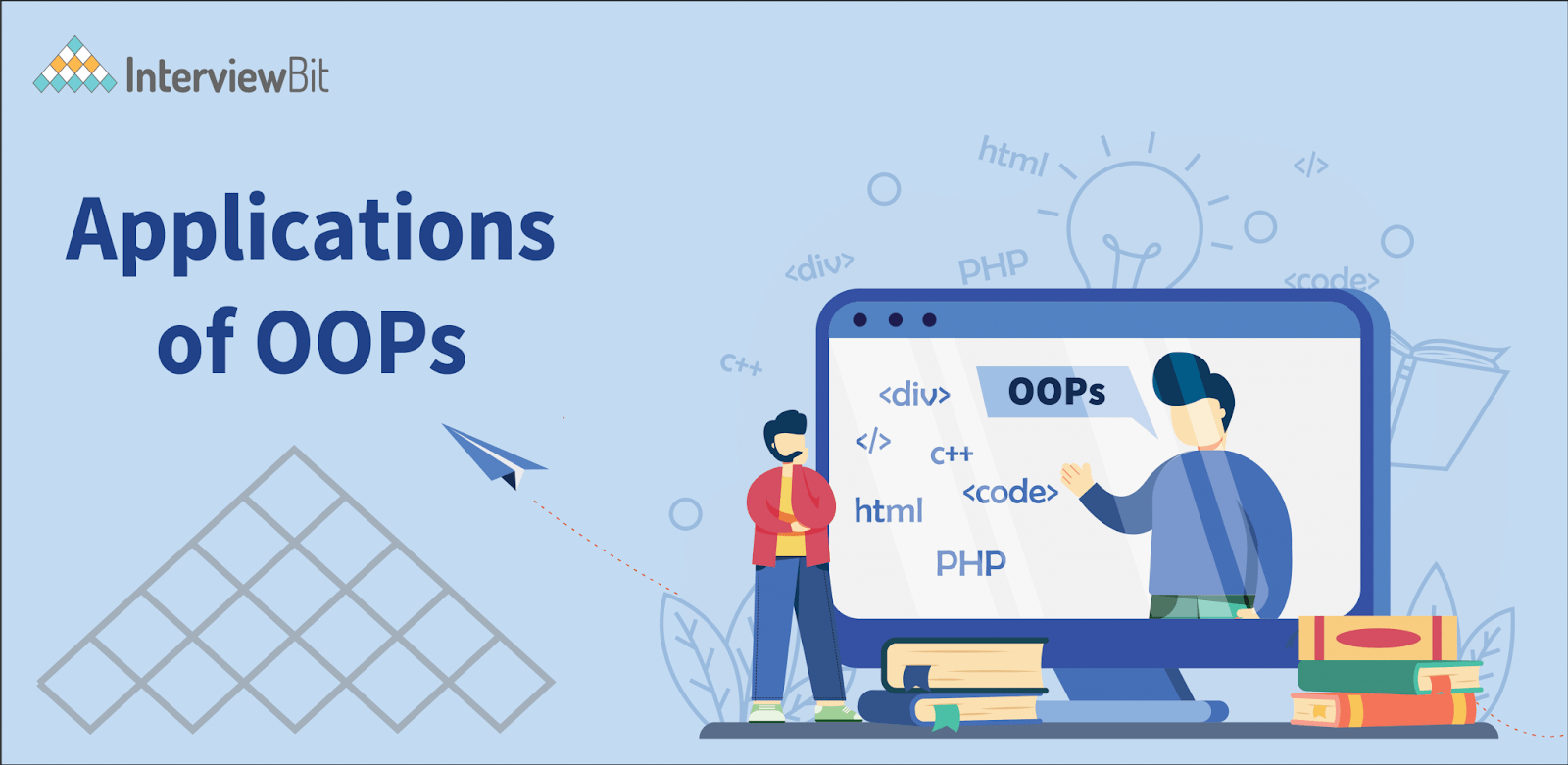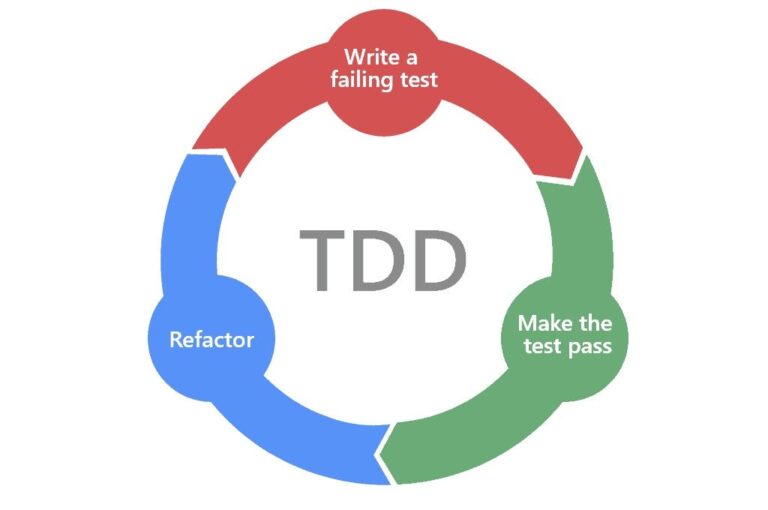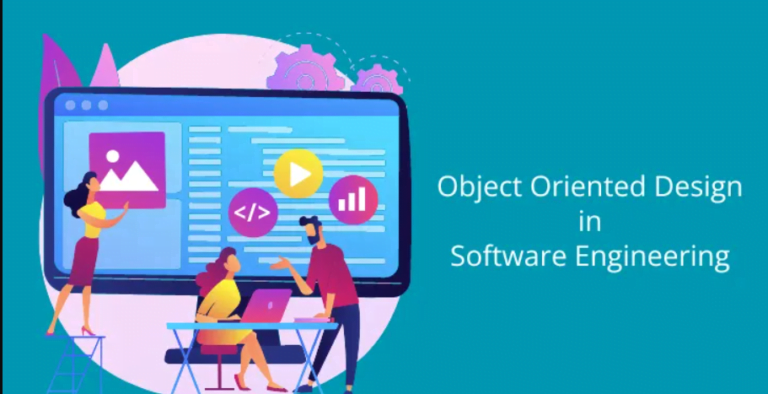An age of unparalleled progress has begun with the software engineering landscape’s fast growth. The stage is set for a dynamic decade ahead with the integration of AI, the growth of low-code apps, and the introduction of new engineering efficiency tools (DevPro Journal). Object-oriented programming (OOP) becomes a vital approach in this fast-paced setting, enabling developers to create programs that are adaptable, scalable, and effective.
The software engineering landscape’s fast expansion has begun an unparalleled age of innovations. DevPro Journal states that the stage is set for a dynamic decade ahead with the integration of AI, the increase of low-code apps, and the introduction of new engineering efficiency tools. Object-oriented programming (OOP), which enables developers to create programs that are not only flexible and scalable but also efficient, becomes apparent in this fast-paced setting.
One of OOP’s main characteristics is its capacity to promote efficiency and modularity in software development. This is especially true in web development, where Python has become the go-to language for utilizing OOP. using the help of OOP concepts, programmers may produce modular software solutions that are both resilient and built faster than using conventional methods.
OOP essentially gives programmers the ability to conceptualize in terms of objects and how they interact, which results in software that is easier to use, more scalable, and easier to maintain. One of the most important strategies for keeping up with the demands of current applications and fostering creativity in the digital era is object-oriented programming (OOP), even as the landscape of software engineering changes.
Enterprise Software Development: A Closer Look
Developing enterprise software entails creating intricate, large-scale systems that cater to the operational requirements of businesses in a range of sectors. Numerous features are included in these systems, including supply chain management, financial processing, human resources management, and customer relationship management. In corporate software development, object-oriented programming, or OOP, is essential because it helps programmers create modular, scalable, and maintainable solutions that meet the needs of businesses.

Important Elements in Developing Enterprise Software:
- Scalability: Enterprise systems sometimes have to accommodate dozens or even millions of users at once while managing massive data and transaction volumes. By enabling developers to create systems that can grow vertically—by adding more resources to already-existing servers—or horizontally—by adding additional servers—to accommodate expanding needs, OOP promotes scalability.
- Modularity: Most enterprise software systems are made up of several different modules or components, each of which carries out a particular function or set of activities. By enclosing similar operations under classes and modules, OOP encourages modularity, which makes system management and maintenance easier as the system develops and changes.
- Integration: To share data and expedite business procedures, enterprise systems frequently need to interface with other systems, apps, or outside services. OOP facilitates integration by offering tools like message protocols, APIs, and interfaces that allow disparate parts and systems to communicate with one another.
- Customization: Off-the-shelf software solutions may need to be modified for enterprises due to their particular business needs and workflows. With OOP, developers may create systems that are readily customizable and expandable to meet particular business requirements without sacrificing the integrity of the main system.
- Security: When developing corporate software, security is crucial, especially when handling sensitive data and meeting legal and regulatory standards. Because OOP allows developers to incorporate data validation methods, encryption systems, and access restrictions into their programs, it promotes secure coding standards.
Case Study: ERP System Implementation
Take a look at a case study where a manufacturing business chooses to automate its inventory control, production scheduling, and order processing by putting in place an Enterprise Resource Planning (ERP) system. The ERP system’s design and implementation are greatly aided by object-oriented programming, which has the following essential elements:

- Object-Oriented Modeling (OOP): Developers model goods, materials, production orders, suppliers, and other elements of the manufacturing process using OOP concepts. These entities are represented by classes, which include methods and properties that capture their interactions and behavior.
- Modular Architecture: The production planning, sales, inventory management, and procurement components of the ERP system are all created separately. Because each module has a distinct set of features, maintenance, scalability, and customization are made easy.
- Integration Capabilities: Accounting software, supply chain management systems, and e-commerce platforms are just a few examples of the external services and current systems that the ERP system easily interfaces with. With OOP, developers may create interfaces and APIs that make it easier for systems to communicate with one another and share data.
- Security Features: To safeguard confidential information and stop illegal access, security measures are put in place all across the ERP system. With OOP, developers may incorporate encryption techniques, audit trails, and role-based access restrictions to guarantee the system’s availability, secrecy, and integrity.
- Customization Options: The manufacturing business may modify the ERP system to fit its unique requirements and processes because of its great degree of customization. The system’s functionality may be expanded and changed by developers without affecting the system’s fundamental design thanks to OOP concepts like inheritance and polymorphism.
Case Study: Banking System
A banking system is one of the most complex and important applications in corporate software development, requiring accuracy, security, and scalability. Let’s examine the case study of a banking system in more detail, paying particular attention to the use of Object-Oriented Programming (OOP) principles. Object-Oriented Modeling:

- Account Class Hierarchy: The depiction of different account types is the cornerstone of the object-oriented model of the banking system. Classes like “SavingsAccount,” “CheckingAccount,” “LoanAccount,” and so forth may fall under this category. Account-specific information (such as balances and interest rates) as well as actions (like deposits and withdrawals) are contained in each class.
- Customer and Employee Classes: The system represents customers and employees as separate entities, each with unique characteristics and actions. Employees manage client accounts by creating new accounts, processing payments, and offering customer service. Customers may have several accounts linked to them.
- Transaction Class: An accounting transaction’s amount, timestamp, type, and involved accounts are all contained in a transaction class. Different transaction types, including deposits, withdrawals, transfers, and loan payments, may be handled by this class.
Modular Architecture: The banking system architecture comprises a service layer for business logic and interactions, including account management, transaction processing, authentication, and authorization. The data access layer facilitates data access through relational databases, NoSQL databases, or external APIs, and the user interface layer provides interfaces for customers and employees.
Security Measures: The banking system uses robust authentication mechanisms like multi-factor and biometric authentication to verify user identity before granting access to sensitive functionality. Data is encrypted to prevent unauthorized access, and audit logging is used to maintain an audit trail for compliance and security purposes.
Scalability and Performance: The banking system uses horizontal scaling to distribute incoming traffic evenly across server instances, maintaining optimal performance under load. Caching mechanisms improve data responsiveness and performance, while optimized database queries minimize response times and resource consumption by indexing frequently queried fields and using caching.
Compliance and Regulatory Requirements: The banking system strictly adheres to regulatory requirements like KYC, AML, and GDPR. It uses transaction monitoring and fraud detection mechanisms to identify suspicious activities. Regular audits and assessments ensure industry standards and regulatory compliance, including internal and external audits by security teams and independent auditors.
Web Development
The creation, development, and upkeep of websites and online applications—from straightforward static pages to intricate dynamic platforms—are all included in web development. A key component of web development is object-oriented programming, or OOP, which enables programmers to design feature-rich, scalable, and maintainable programs that satisfy users’ and companies’ expectations. This section will cover the several areas of web development where object-oriented programming is used, supported by case studies and real-world examples.

Object-Oriented Models in Web Development
Object-oriented programming is used in web development to represent different parts of an online application, such as:
- User Profiles: In online applications, user profiles are frequently shown as objects that hold information like email addresses, usernames, and preferences. To handle user-related operations and construct user profile objects, OOP concepts like inheritance and encapsulation are applied.
- Content Management: OOP is used by content management systems (CMS) to represent relationships, taxonomies, and categories of material. Classes are used to represent content elements, such as photographs, videos, and articles. The administration of various content kinds is made easier by polymorphism and inheritance.
- E-commerce Entities: To represent goods, categories, orders, and transactions, e-commerce systems use object-oriented programming (OOP). Using object-oriented models, developers may create e-commerce systems that are both scalable and adaptable by defining product properties, pricing policies, and inventory management features.
Web development frameworks like Ruby on Rails, Django, and Laravel use Object-Oriented Programming (OOP) principles to build efficient web applications. These frameworks promote modular design, code reuse, and separation of concerns. Model-View-Controller (MVC) architecture allows for clean, modular design. Object-relational mapping (ORM) libraries provide abstractions for database interactions, reducing complexity and improving code readability. Component-based development, like React.js and Angular, encapsulates user interface elements as reusable components using OOP principles.
Content Management System (CMS)
Material management Systems (CMS) are vital instruments for effectively organizing and disseminating digital material. They remove the need for technical knowledge by enabling businesses to produce, edit, arrange, and publish material including blogs, photos, videos, and articles. To build and develop CMS systems, object-oriented programming, or OOP, is essential because it enables programmers to construct platforms that are user-friendly, modular, and extendable. Let’s examine a case study of developing an OOP-based content management system in more detail:

Creating Object-Oriented Models
When creating a content management system (CMS), programmers utilize object-oriented programming (OOP) to create models that reflect different kinds of content, user roles, and system configurations. Every form of content, including blog entries, multimedia, and articles, is represented as a class with methods and attributes that capture its characteristics. Similarly, classes are used to handle user authentication and authorization for user roles, permissions, and access restrictions.
CMS development involves creating a modular architecture that allows for easy customization and extension. OOP allows developers to design modules that correspond to specific CMS functionality, ensuring code reusability, maintainability, and scalability. Design patterns like Factory Method, Observer, and Composite can be leveraged to address common design problems. OOP supports customization and extensibility by providing mechanisms like inheritance, polymorphism, and dependency injection. It also ensures security and performance by implementing features like data encryption, user authentication, and access controls. OOP also optimizes CMS performance by employing techniques like caching, lazy loading, and database optimization.
Game Development
The exciting discipline of game creation blends technological know-how, creative thinking, and problem-solving abilities to produce captivating and immersive digital experiences. To create modular, scalable, and maintainable gaming systems, developers need to know how to use Object-Oriented Programming (OOP). Through several case studies and examples, we’ll examine how OOP ideas are used in many facets of game development in this part.

Case Study: Role-Playing Game (RPG)
Video games that immerse players in intricate, interactive worlds full of missions, characters, and obstacles are known as role-playing games, or RPGs for short. RPGs are designed and developed using OOP concepts, which allow developers to construct modular and flexible game systems. This is an example of how OOP is used while creating an RPG:

- Object-Oriented Models: Characters, objects, adversaries, and surroundings are all modeled as objects in role-playing games, complete with characteristics and actions. Developers may express these things as classes thanks to object-oriented modeling, which makes managing and interacting with them in the gaming environment simple.
- Inheritance and Polymorphism: Strong ideas in RPG creation, inheritance, and polymorphism enable designers to construct a wide variety of dynamic game features. For instance, using polymorphism, many character classes—such as wizards, rogues, and warriors—can implement unique skills and characteristics while inheriting shared features and qualities from a basic character class.
- Game State Management: To keep track of player progress, quest status, and global events, RPG developers must manage the game’s state. By allowing objects and classes to represent game states, transitions, and events, OOP makes it easier to create game state management systems and ensures consistency and coherence across the gameplay experience.
Puzzle Game
Puzzle games test players’ ability to use creativity, logic, and strategy to solve problems and get past barriers. Puzzle game designers and developers rely heavily on OOP ideas to design and implement modular, scalable, and adaptable game systems. This is an example of how OOP is used while creating a puzzle game:

- Object-Oriented Models: Characters, power-ups, obstacles, and riddles are just a few examples of game components that are modeled as objects with characteristics and actions in puzzle games. Using classes and objects, object-oriented modeling enables developers to specify how these components interact, which simplifies the creation of intricate game situations and puzzle mechanisms.
- Encapsulation and Abstraction: These two ideas are crucial to the creation of puzzle games because they let programmers conceal implementation specifics and only provide pertinent data to other game elements. For instance, developers can abstract away the underlying technology and still provide a straightforward and user-friendly interface for engaging with the problem by encapsulating the puzzle logic within a puzzle class.
- Event Handling and Feedback: Event-driven programming is frequently used in puzzle games to manage player input, start game events, and provide player feedback. Through the use of classes and objects to build event listeners, callbacks, and event dispatchers, OOP makes event handling easier and allows for smooth interaction between player actions and game elements.
Object-Oriented Programming (OOP) is a crucial concept in game development, enabling developers to create complex, interactive systems. Its principles, such as modeling, inheritance, polymorphism, encapsulation, and abstraction, are applied in RPGs and puzzle games.
To wrap it up, Object-Oriented Programming (OOP) is a powerful and adaptable paradigm that is used in many different fields, such as web development, game development, and corporate software development. By using OOP concepts and design patterns wisely, developers may create software solutions that are highly maintainable in addition to being scalable and durable. Real-world case studies provide powerful evidence of the applicability of OOP, demonstrating its capacity to resolve challenging issues and provide noticeable benefits to both businesses and end users.
Object-Oriented Programming, which is the cornerstone of software engineering, is an unstoppable force as technology advances unabatedly. Its ability to enable developers to envision, create, and execute ground-breaking software solutions that influence the digital world accounts for its ongoing significance. OOP serves as a beacon of resilience and flexibility in a world where change is constant, assisting developers in creating software that satisfies the ever-changing requirements of a demanding and dynamic user base.








